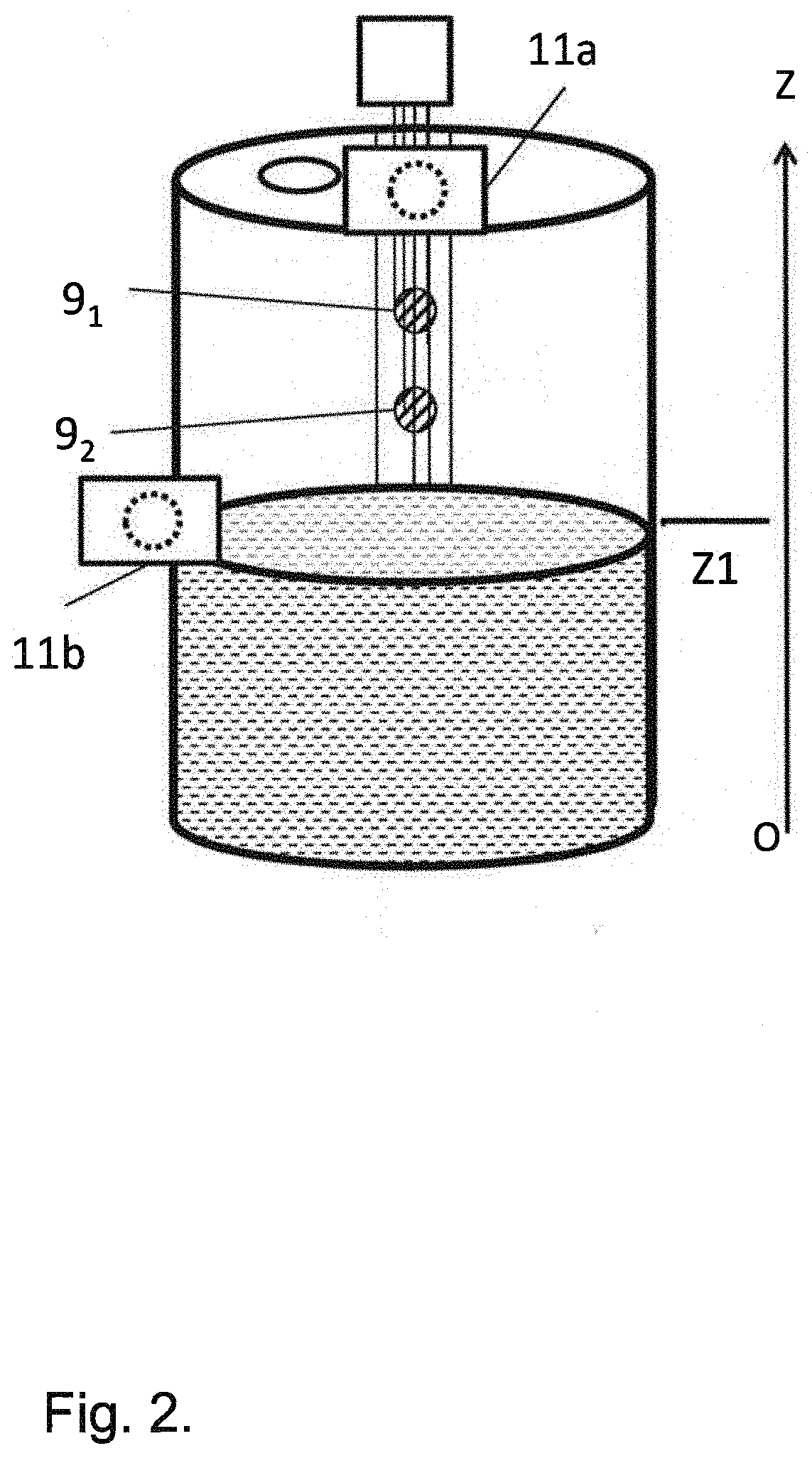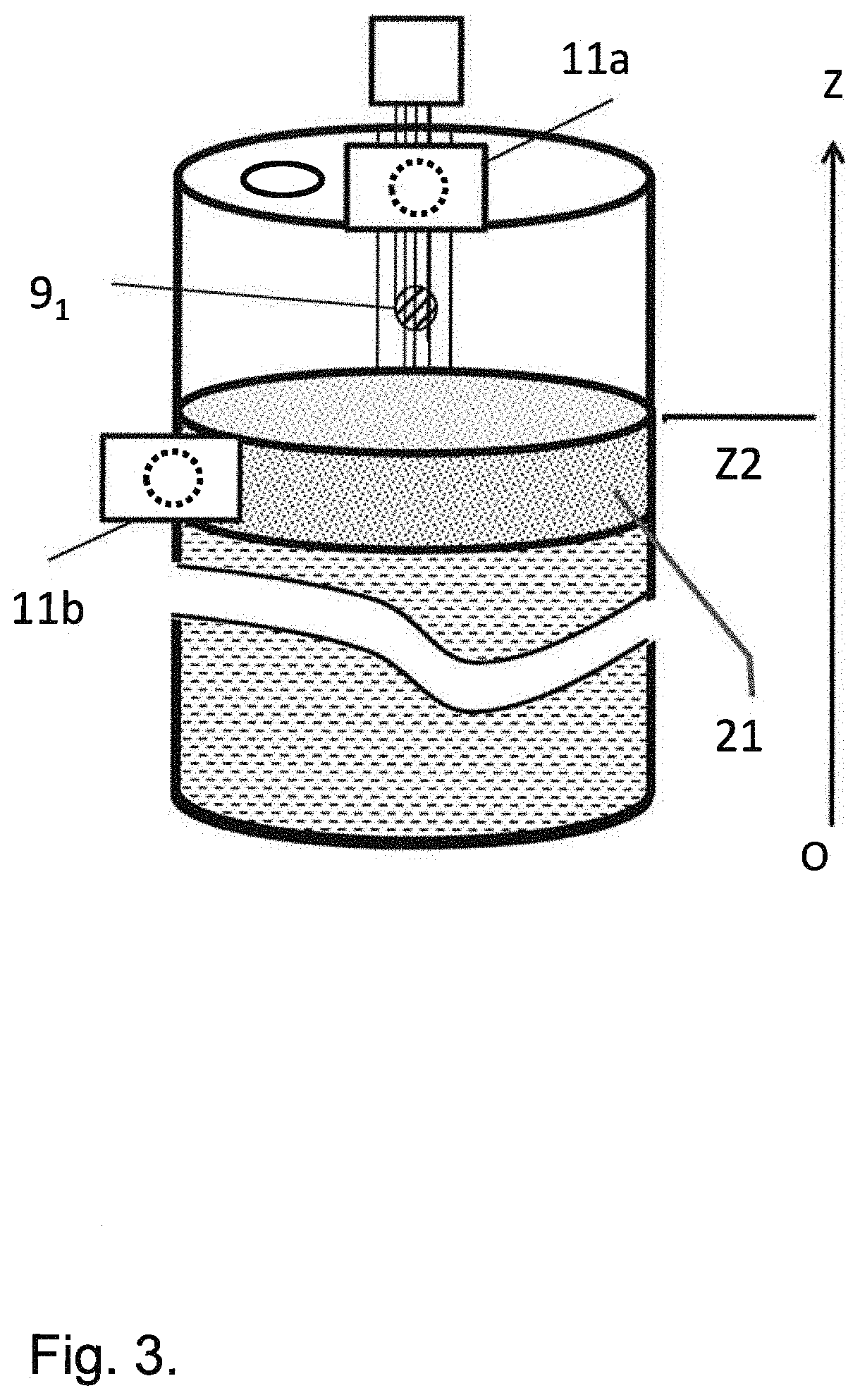Detection of foam levels
a technology of foam and foam thickness, applied in the field of bioreactors, can solve the problems of reducing process productivity, loss of sterility, and the use of antifoams, and achieve the effect of accurately predicting and delivering, accurately calculating photon counts, and foam thickness
- Summary
- Abstract
- Description
- Claims
- Application Information
AI Technical Summary
Benefits of technology
Problems solved by technology
Method used
Image
Examples
Embodiment Construction
[0037]A system for controlling foaming in a bioreactor system using single-use bags is shown schematically in FIG. 1. The system 1 comprises a mantled rigid (e.g. stainless steel) open reactor vessel 2 (shown by dashed lines) adapted to support and maintain at the correct temperature an airtight single use transparent plastic reactor bag 3. The bioculture which is necessary for a bioprocess can be loaded into the bag via an inlet port 4 on the bag. In order to control foaming, a control device 5 such as a microprocessor or computer is connected to a power supply 7 which provides power to a series of light sources 91 to 9n which are provided on or near to a side wall of the reactor vessel. These light sources are arranged at different heights from the base of the reactor vessel e.g. in the form of a vertical line or a staggered or oblique line. Alternatively, a light source extending in a vertical direction can also be used, e.g. a vertical or oblique fluorescent tube. In this case, ...
PUM
| Property | Measurement | Unit |
|---|---|---|
| distance | aaaaa | aaaaa |
| thickness | aaaaa | aaaaa |
| thickness | aaaaa | aaaaa |
Abstract
Description
Claims
Application Information
 Login to View More
Login to View More - R&D Engineer
- R&D Manager
- IP Professional
- Industry Leading Data Capabilities
- Powerful AI technology
- Patent DNA Extraction
Browse by: Latest US Patents, China's latest patents, Technical Efficacy Thesaurus, Application Domain, Technology Topic, Popular Technical Reports.
© 2024 PatSnap. All rights reserved.Legal|Privacy policy|Modern Slavery Act Transparency Statement|Sitemap|About US| Contact US: help@patsnap.com










